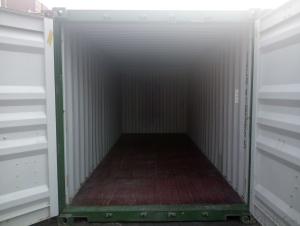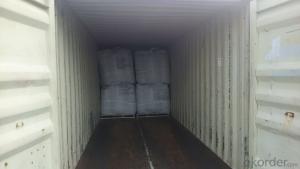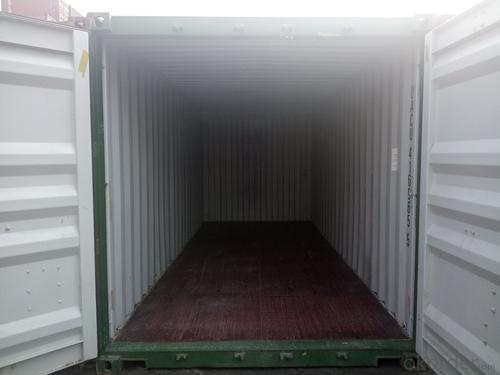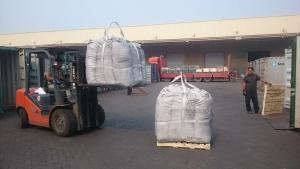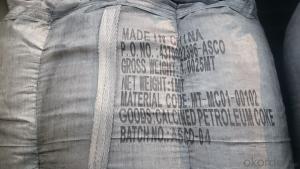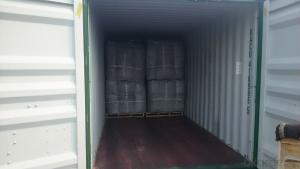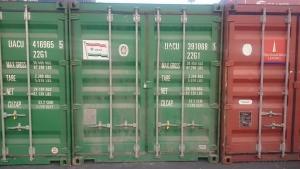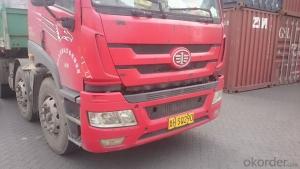Used in EAF as Charge Coke for Steel Mills with FC 90%min
- Loading Port:
- Tianjin
- Payment Terms:
- TT OR LC
- Min Order Qty:
- 21 m.t.
- Supply Capability:
- 6000 m.t./month
OKorder Service Pledge
OKorder Financial Service
You Might Also Like
Introduction:
Calcined anthracite can be called carbon additive, carbon raiser, recarburizer, injection coke, charging coke, gas calcined anthracite.
Carbon Additive/Calcined Anthracite Coal may substitute massively refinery coke or graphite. Meanwhile its cost is much less than the refinery coke and graphite. Carbon Additive is mainly used in electric steel ovens, water filtering, rust removal in shipbuilding and production of carbon material.
It has good characteristics with low ash, low resistivity, low sulphur, high carbon and high density. It is the best material for high quality carbon products. It is used as carbon additive in steel industry or fuel.
Features:
Best quality Taixi anthracite as raw materials through high temperature calcined at 800-1200 ℃ by the DC electric calciner with results in eliminating the moisture and volatile matter from Anthracite efficiently, improving the density and the electric conductivity and strengthening the mechanical strength and anti-oxidation, It has good characteristics with low ash, low resistivity, low carbon and high density. It is the best material for high quality carbon products, it is used as carbon additive in steel industry or fuel.
Specifications:
F.C.% | 95MIN | 94MIN | 93MIN | 92MIN | 90MIN | 85MIN | 84MIN |
ASH % | 4MAX | 5MAX | 6 MAX | 6.5MAX | 8.5MAX | 12MAX | 13MAX |
V.M.% | 1 MAX | 1MAX | 1.0MAX | 1.5MAX | 1.5MAX | 3 MAX | 3 MAX |
SULFUR % | 0.3MAX | 0.3MAX | 0.3MAX | 0.35MAX | 0.35MAX | 0.5MAX | 0.5MAX |
MOISTURE % | 0.5MAX | 0.5MAX | 0.5MAX | 0.5MAX | 0.5MAX | 1MAX | 1MAX |
Pictures
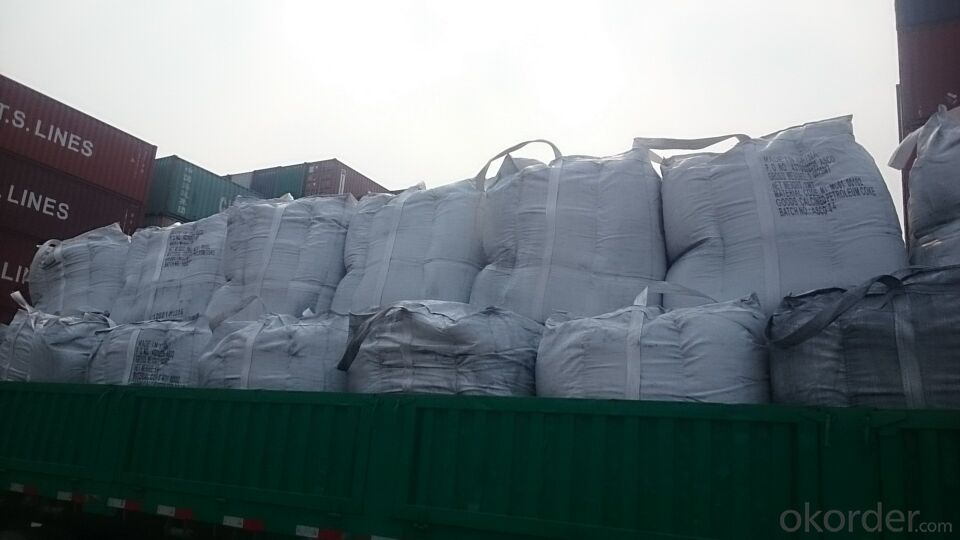
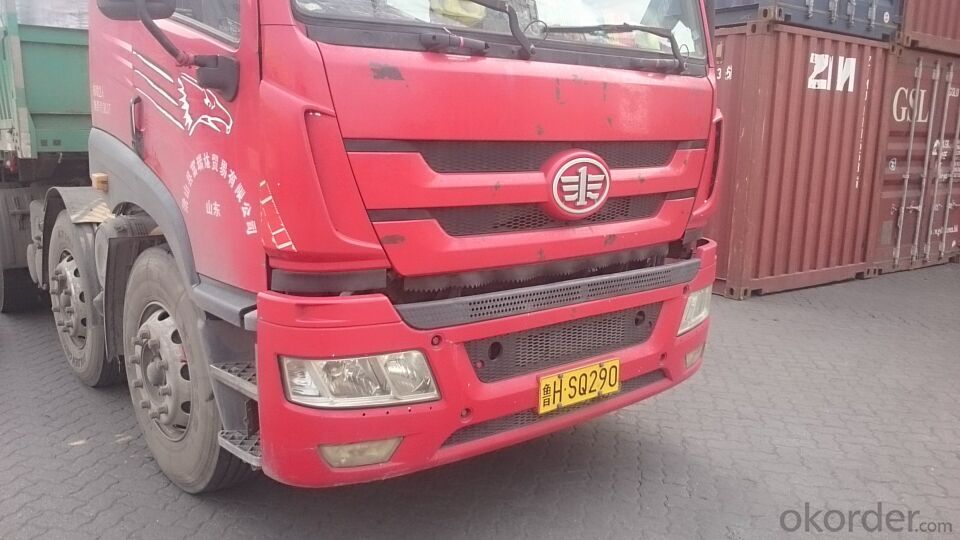
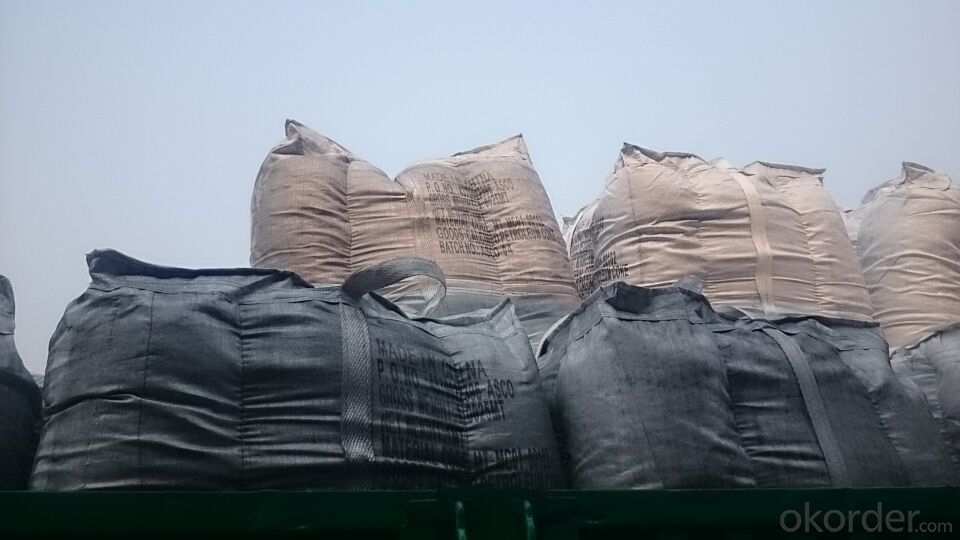
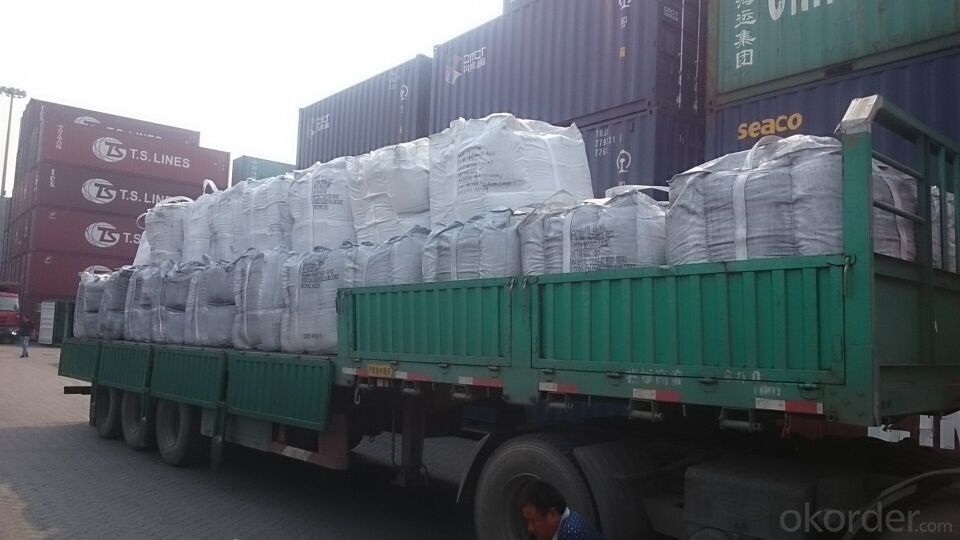
FAQ:
Packing:
(1). Waterproof jumbo bags: 800kgs~1100kgs/ bag according to different grain sizes;
(2). Waterproof PP woven bags / Paper bags: 5kg / 7.5kg / 12.5kg / 20kg / 25kg / 30kg / 50kg small bags;
(3). Small bags into jumbo bags: waterproof PP woven bags / paper bags in 800kg ~1100kg jumbo bags.
Payment terms
20% down payment and 80% against copy of B/L.
Workable LC at sight,
- Q: How does carbon form?speed
- How is coal formed?Coal is known as black gold, the food industry, it is one of the main energy use of the human world since eighteenth Century. Although its important position has been replaced by oil, but in the future for a long period of time, due to the exhaustion of petroleum, inevitable decline, but because of the huge reserves of coal, and the rapid development of science and technology, the new technology of coal gasification is becoming more mature and widely used, coal will become one of the production and life of human beings in an irreplaceable energy.Coal is millions of years of plant leaves and roots, stacked on the ground with a layer of very thick black humus, due to changes in the earth's crust constantly buried underground, long isolated from the air and under high temperature and pressure, after a series of complex physical and chemical changes and other factors, the formation of black however, this fossil, is the coal forming process.The thickness of coal seam in a coal mine and the crust drop speed and accumulation amount of plant remains. The crust decreased rapidly, the plant remains piled thick, the coal seam is thick, on the other hand, the crust decline slowly, the accumulation of plant remains thin, the mine coal seam is thin. The tectonic movement of the crust to the original level of coal seam folds and faults occur, some underground coal seam buried deeper, and squeezed to the surface, even above the ground, more likely to be found. There are some relatively thin coal seam, and the area is not large, so there is no value related to the formation of coal mining, so far not find the update statement.
- Q: What is the greenhouse effect of carbon dioxide?
- The greenhouse effect of carbon dioxide refers to the process by which carbon dioxide (CO2) and other greenhouse gases in the Earth's atmosphere trap heat from the sun and contribute to the warming of the planet. These gases act like a blanket, allowing sunlight to pass through but trapping the heat that is reflected back from the Earth's surface. When sunlight reaches the Earth's surface, it warms the land, oceans, and atmosphere. As the Earth re-radiates this heat back into space, greenhouse gases absorb and re-emit some of this energy, preventing it from escaping into space. This process naturally occurs and is essential for maintaining the Earth's temperature within a habitable range, making life as we know it possible. However, human activities, particularly the burning of fossil fuels such as coal, oil, and natural gas, have significantly increased the concentration of carbon dioxide and other greenhouse gases in the atmosphere. This has intensified the greenhouse effect, leading to a rise in global temperatures, commonly referred to as global warming or climate change. The increased levels of carbon dioxide in the atmosphere result in more heat being trapped, creating a greenhouse effect that amplifies the natural warming process. The consequences of this include rising sea levels, more frequent and severe extreme weather events, changes in precipitation patterns, and disruptions to ecosystems and biodiversity. Addressing the greenhouse effect of carbon dioxide and reducing greenhouse gas emissions is crucial in mitigating the impacts of climate change. Efforts to transition to renewable energy sources, increase energy efficiency, and promote sustainable practices are key in reducing carbon dioxide emissions and combating global warming.
- Q: What are the impacts of carbon emissions on the stability of rainforests?
- Carbon emissions have significant impacts on the stability of rainforests. Increased levels of carbon dioxide in the atmosphere due to emissions contribute to global warming, leading to changes in rainfall patterns and increased temperatures. These changes can negatively affect the delicate balance of rainforest ecosystems, causing droughts, wildfires, and loss of biodiversity. Additionally, carbon emissions contribute to the acidification of oceans, which can harm marine life that rainforests depend on, such as coral reefs. Overall, carbon emissions pose a serious threat to the stability and long-term survival of rainforests.
- Q: What are the consequences of increased carbon emissions on economic stability?
- Increased carbon emissions have significant consequences on economic stability. One of the most notable impacts is the exacerbation of climate change, leading to more frequent and severe natural disasters such as hurricanes, floods, and wildfires. These events result in immense economic damage, including the destruction of infrastructure, loss of property, and disruption of supply chains. Furthermore, the effects of climate change, driven by increased carbon emissions, also have long-term economic implications. Rising sea levels threaten coastal cities and industries, leading to the potential displacement of populations and loss of valuable assets. Extreme heatwaves and droughts can damage agricultural productivity, affecting food security and increasing prices. These climate-related disruptions can destabilize economies, particularly in vulnerable regions heavily reliant on agriculture or tourism. Additionally, efforts to mitigate and adapt to climate change, such as transitioning to cleaner energy sources and implementing climate policies, require significant financial investments. This can strain government budgets and divert resources away from other socio-economic priorities, potentially leading to reduced funding for education, healthcare, and infrastructure development. Moreover, the economic consequences of increased carbon emissions extend beyond immediate climate-related impacts. The reliance on fossil fuels as the primary source of energy contributes to volatile oil prices, which can disrupt global markets and impact economic stability. As the world moves towards a low-carbon economy, industries heavily dependent on fossil fuels may face significant challenges, leading to job losses and economic dislocation. In summary, increased carbon emissions have far-reaching consequences on economic stability. The resulting climate change leads to more frequent and severe natural disasters, causing substantial economic damage. Furthermore, the need to respond to climate change through mitigation and adaptation efforts can strain government budgets and divert resources away from other essential sectors. Lastly, the reliance on fossil fuels contributes to volatile oil prices and poses long-term risks to industries tied to these resources. Addressing carbon emissions is crucial for safeguarding economic stability and promoting sustainable growth.
- Q: What is the difference in carbon content of low carbon steel, medium carbon steel and high carbon steel?
- Carbon content of low carbon steel (AISI1005 ~ 1026) is 0.06% to 0.28%, manganese content is 0.25% to 1%, phosphorus content is not more than 0.04%, sulfur content is not more than 0.05%.
- Q: What's a carbon cloth to do as a fish pole?
- This is difficult, usually with a lathe like tool, by heating in the brush, layer by layer roll up, and finally cut off paint, baking
- Q: What is carbon fiber reinforced plastic?
- Carbon fiber reinforced plastic (CFRP) is a composite material made by combining carbon fibers with a polymer matrix, typically epoxy resin. It is known for its exceptional strength-to-weight ratio, making it a lightweight alternative to traditional materials like steel and aluminum. The carbon fibers provide the material with high tensile strength and stiffness, while the polymer matrix helps to distribute the load and provide durability. The manufacturing process of CFRP involves layering carbon fiber sheets or fabrics and impregnating them with the polymer resin. This combination is then cured under high temperature and pressure to create a solid and rigid structure. The resulting material is incredibly strong, yet significantly lighter than other materials of similar strength, such as steel. CFRP finds numerous applications across various industries due to its unique properties. It is commonly used in aerospace and automotive sectors to reduce the weight of components and improve fuel efficiency. Additionally, it is used in sports equipment, such as bicycles, tennis rackets, and golf clubs, as it allows for better performance and maneuverability. CFRP is also utilized in construction, where its high strength and resistance to corrosion make it suitable for reinforcing structures like bridges and buildings. Overall, carbon fiber reinforced plastic is a versatile and high-performance material that combines the strength of carbon fibers with the flexibility of a polymer matrix. Its lightweight nature and exceptional mechanical properties make it a popular choice across industries where strength, weight reduction, and durability are crucial factors.
- Q: How is carbon used in the production of paints and coatings?
- Paints and coatings utilize carbon in various ways. To begin with, carbon black, a commonly used pigment, adds color and opacity to these products. It is produced by controlled burning of natural gas or oil, resulting in fine carbon particles. By intensifying color and increasing durability, carbon black enhances the paint or coating, making it more resistant to UV light and weathering. Furthermore, carbon-based compounds, such as resins and polymers, serve as binders in the formulation of paints and coatings. These binders play a vital role in keeping the pigment particles intact and firmly adhered to the surface being painted or coated. Carbon-based binders are renowned for their outstanding adhesion properties, which contribute to the longevity and durability of the paint or coating. Moreover, carbon nanotubes are increasingly finding applications in the production of high-performance paints and coatings. These cylindrical carbon structures possess exceptional mechanical, thermal, and electrical properties. Incorporating them into paint or coating formulations enhances strength, conductivity, and resistance against corrosion or abrasion. In conclusion, carbon is an indispensable component in the production of paints and coatings. It functions as a pigment, providing color and opacity, as well as a binder, holding pigment particles together. Additionally, carbon nanotubes enhance the performance and functionality of the final product.
- Q: What are the consequences of increased carbon emissions on human migration patterns?
- Increased carbon emissions have significant consequences on human migration patterns. One of the most prominent effects is the exacerbation of climate change, leading to more frequent and intense natural disasters such as hurricanes, floods, and droughts. These extreme weather events can devastate communities, destroy infrastructure, and disrupt livelihoods, forcing people to migrate in search of safer and more stable environments. Rising sea levels, another consequence of carbon emissions, pose a significant threat to coastal regions and island nations. As sea levels continue to rise, low-lying areas become more prone to flooding and coastal erosion, making them uninhabitable. This displacement of populations, commonly referred to as climate refugees, can lead to mass migrations, putting additional strain on resources and infrastructure in destination areas. Moreover, carbon emissions contribute to changes in temperature and precipitation patterns, which can have a profound impact on agricultural activities. Shifts in growing seasons, increased frequency of droughts or floods, and the spread of pests and diseases can negatively affect crop yields and food security. This disruption in the availability of food and resources can push vulnerable populations to migrate in search of better livelihoods and food sources. The consequences of increased carbon emissions on human migration patterns also extend to health issues. Climate change can lead to the spread of diseases, such as malaria and dengue fever, as well as worsen air pollution, exacerbating respiratory problems. These health risks can force individuals and communities to relocate to areas with better healthcare infrastructure and conditions. In summary, increased carbon emissions have wide-ranging consequences on human migration patterns. The intensification of climate change, rising sea levels, disruptions to agriculture, and health risks all contribute to the displacement of populations, creating a need for individuals and communities to seek safer and more stable environments. Addressing carbon emissions and mitigating climate change is essential to minimize the negative impacts on human migration and ensure a sustainable future.
Send your message to us
Used in EAF as Charge Coke for Steel Mills with FC 90%min
- Loading Port:
- Tianjin
- Payment Terms:
- TT OR LC
- Min Order Qty:
- 21 m.t.
- Supply Capability:
- 6000 m.t./month
OKorder Service Pledge
OKorder Financial Service
Similar products
Hot products
Hot Searches
